Double-barreled shotguns. Heavy metal riffs. Strafing. Shooting everything on sight. In the 1990s, it was the perfect formula for a video game hit. The early work of companies such as 3D Realms, id Software, and Epic Games defined the standard for a new genre. Together, they innovated on a shared foundation of fast-paced action, tons of big guns, and enemies that wanted to stop you at all costs to birth the first-person shooter.
In the almost three decades since, shooters have largely branched off in two different directions. One, spearheaded by games like Counter-Strike, Halo, Call of Duty, and Battlefield, leaned heavily into multiplayer. The other, as embodied by Half-Life, BioShock, and Deus Ex, shifted the focus to cinematic storytelling and immersive worlds. Both these branches eventually sought out ways to build out the core experience of shooting, most commonly with RPG-style progression and customization.
More recently, though, we’ve seen a concerted effort to pare back those elements and reclaim something closer to the genre’s origins. The 2017 Doom found id Software attempting to return to the early days of its own series, while other classic properties, like Wolfenstein, Rise of the Triad and Shadow Warrior, have been handed over to new developers in an attempt to recapture that retro spark.
But it’s a wave of independent developers that have become the biggest driving force behind the rise of the throwback shooter. Some of these smaller studios are looking to build new games closely inspired by those they played when they were teenagers. Others are experimenting with classic engines and visual styles to create something original, like a new evolutionary line splintered off from a species long thought extinct.
EGM reached out to the creators behind Dusk, Amid Evil, Project Warlock, Prodeus, Hellscreen, Ion Fury, and Wrath to learn about what made classic shooters so interesting and memorable, the role childhood memories played in bringing the genre back to its roots, and the challenges of trying to appeal to new audiences with willfully outmoded design.
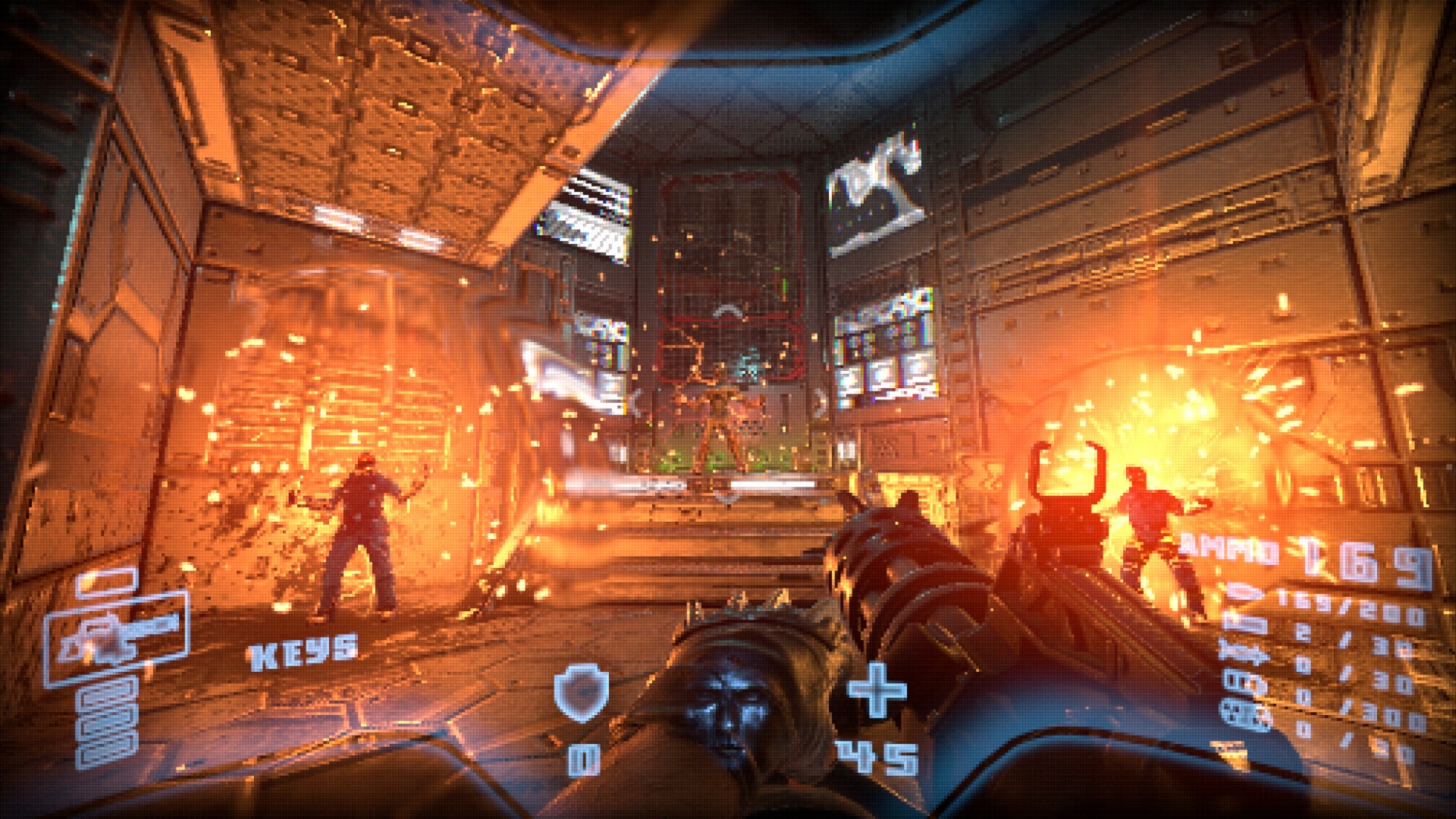
Credit: Bounding Box Software Inc.
According to the developers we spoke with, several key components of ’90s first-person shooters made them special: fast-paced gameplay, maze-like levels filled with secrets, and unscripted action as opposed to choreographed setpieces.
As one of the developers behind Prodeus, Jason Mojica joined this retro revival after working for years on more modern takes on the genre, including Payday 2, BioShock Infinite, and the Call of Duty: Black Ops series. For Mojica, developing a throwback first-person shooter was born from a pursuit to understand the more classic elements of the genre.
“It wasn’t about recreating. It was purely passion driven by a desire to learn and get into that old school mindset. I’m a level design junkie by trade, so digging into these older games was extremely interesting, and gave me a different appreciation for them,” he told EGM. “It’s amazing how clean their design was. It’s something that you just don’t get from mainstream games today.”
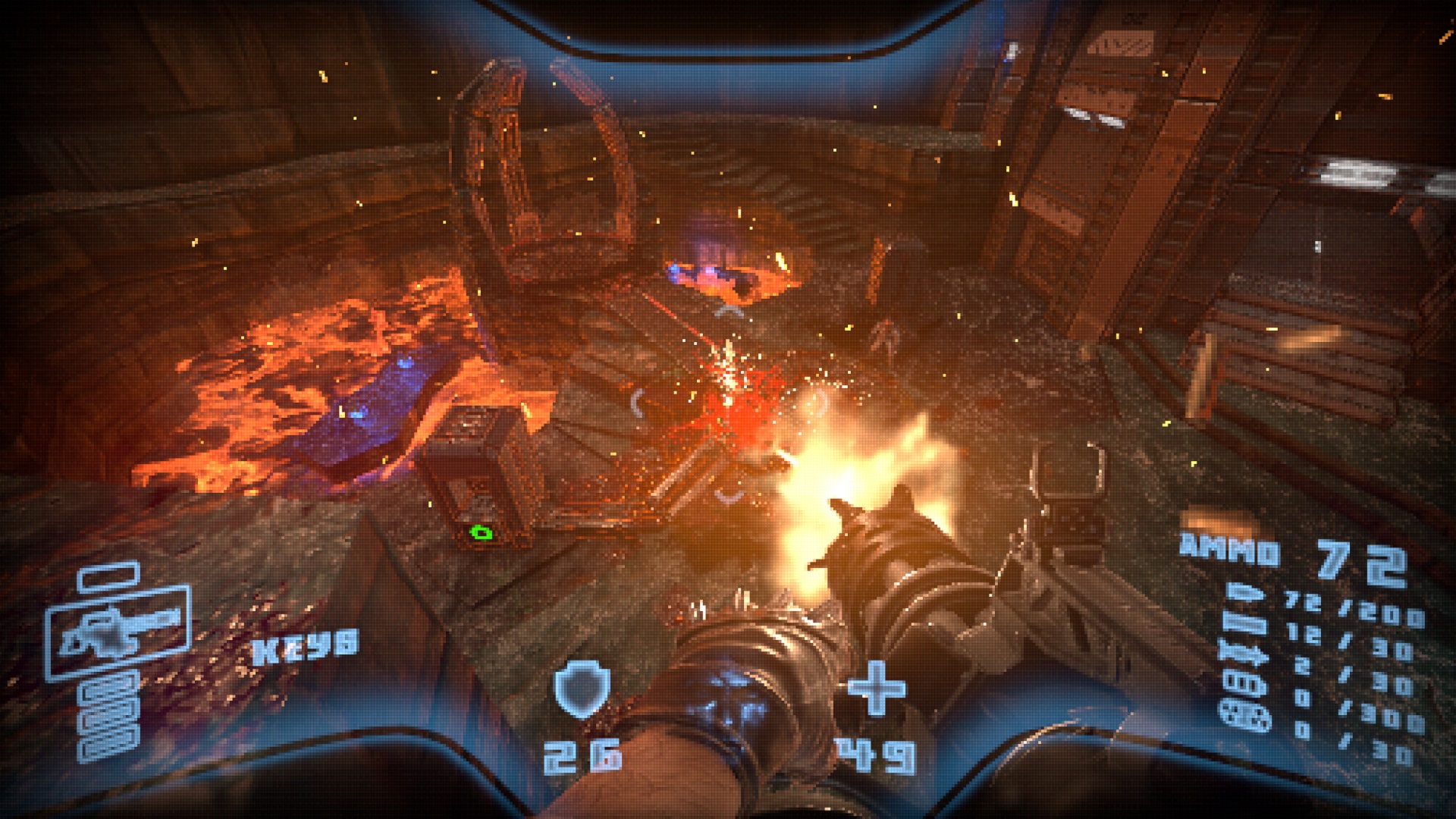
Credit: Bounding Box Software Inc.
Both Mojica and Mike Voeller have been working on Prodeus since 2017, having first met while working together at Raven Software on the 2010 shooter Singularity. The pair successfully crowdfunded Prodeus in early 2019, and they expect to release the game next year. One of the features they’re proudest of—stemming from that initial desire to dig into classic level design—is a level editor and native workshop support. Sharing and downloading maps from the community will only take a few clicks in-game.
“Mike and I grew up [around] modding and level design communities, so heading back into that space was important,” Mojica said. “Having a strong community is something we believe in, and one of the core reasons we are building Prodeus with our level editor directly in the game. We want to help usher in a new age of level designers and modders.”
Modding played an important part in the lives of Indefatigable’s team members as well. The studio’s own ode to classic shooters, Amid Evil, was born as an idea for a fantasy FPS where you play as a powerful battlemage, co-creator Leon Zawada told EGM. Games like Hexen and Heretic are often raised as design inspirations for Amid Evil, but most of the team’s learning process came from studying old engines by hand.
“In order to keep things smooth and straightforward for a small team [composed of three other members], the simple yet fun, fast-paced gameplay of the older shooters was the way to go for us. We made a lot of mods/levels for Doom, so were very familiar with how to go about it,” Zawada said.
Zawada argued that the modding scene for classic shooters never really lost its former glory. “I’d say it’s ‘still glorious’—the Doom community, for example, is still very active and making lots of content. Same with Quake.” Just looking at the Doom page on Mod DB, there are 172 mods published, 128 of them already released. At time of writing, the page has over 12 million total views.
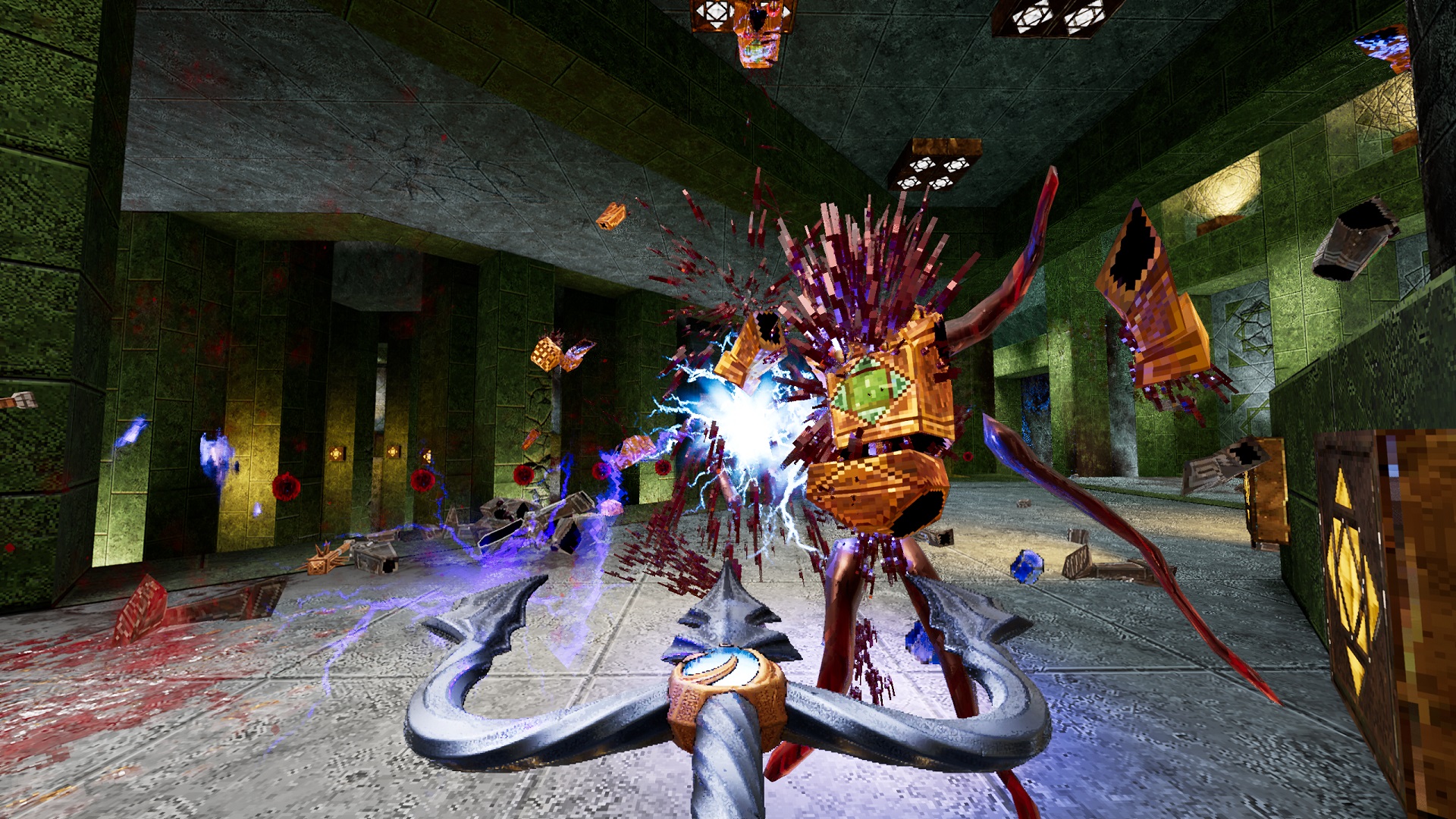
Credit: New Blood Interactive
Jakub Cislo started developing his own take on classic shooters while still in high school. While the other kids his age were busy playing PUBG and Fortnite, he was working on Project Warlock, a first-person shooter that puts you in the robes of a wizard. Cislo didn’t do it alone—according to an interview with Kotaku, he assembled a development team that included an artist, level designer, and sound designer—but he was the driving force behind the project.
Born in 1998, Cislo remembers his father showing him games like Doom and Quake, an experience that jump-started his interest in revisiting the genre’s early days. The satisfaction of uninterrupted shooting is what he misses the most from those ’90s games.
“I personally really liked how fluid the gameplay was,” Cislo told EGM. “Nothing was distracting the player from the core mechanics such as shooting and searching for secrets. There were no interruptions like cutscenes, or dialogue with other characters. I think that the greatness of these games lies in their simplicity. They don’t boggle your mind with tons of different activities, and that is exactly what we liked about them.”
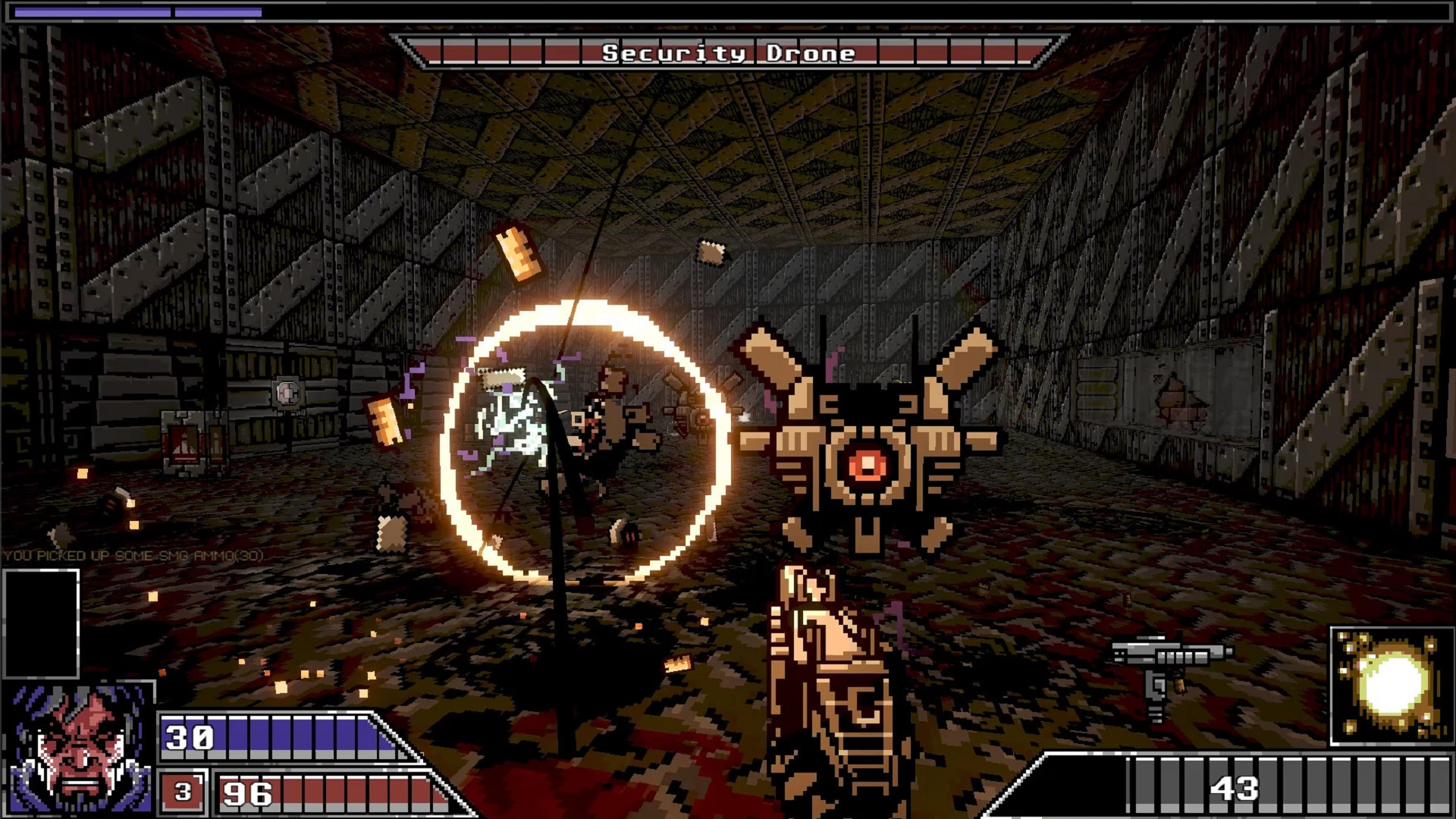
Credit: gaming company
First revealed back in 2016, David Szymanski’s Dusk was in the vanguard of the throwback shooter revival. The game boasts a PlayStation 1–inspired art style, fast guns, and a focus on verticality. Publisher New Blood Interactive—which would eventually also publish Amid Evil—released Dusk in December 2018 following a year in early access.
“Dusk was a game I wanted to make since I was a young teenager, in one form or another, and it just happened to work out that I finally got into a position to make it around the time that retro FPS were sort of getting a resurgence,” Szymanski told EGM. “During development, I definitely felt very strongly about trying to recapture what made ’90s level design enthralling to me, since I felt like a lot of those principles [and] values had been missing from first person shooters.”
He added that level design is a core element—for him, the essence of a good retro FPS relies on having spaces that flow and are fun to explore and fight in. “Levels that have elements of backtracking and looping, with an interesting 3D space that the player can understand seeing it from different angles. I think the pace of combat is also important. For a lot of people now that translates into the sort of circle strafing and projectile dodging seen frequently in Doom and Quake.”
Szymanski said that even if this is seen as the norm, a lot of older shooters—especially those developed in the Build engine, like Duke Nukem 3D—leaned heavy on cover and using line of sight. They just did so in a way that flowed together as part of the skill-based movement. At the same time, these games were on the forefront of environmental storytelling, even though that’s often considered as an aspect of gaming that first came to prominence in the 2000s.
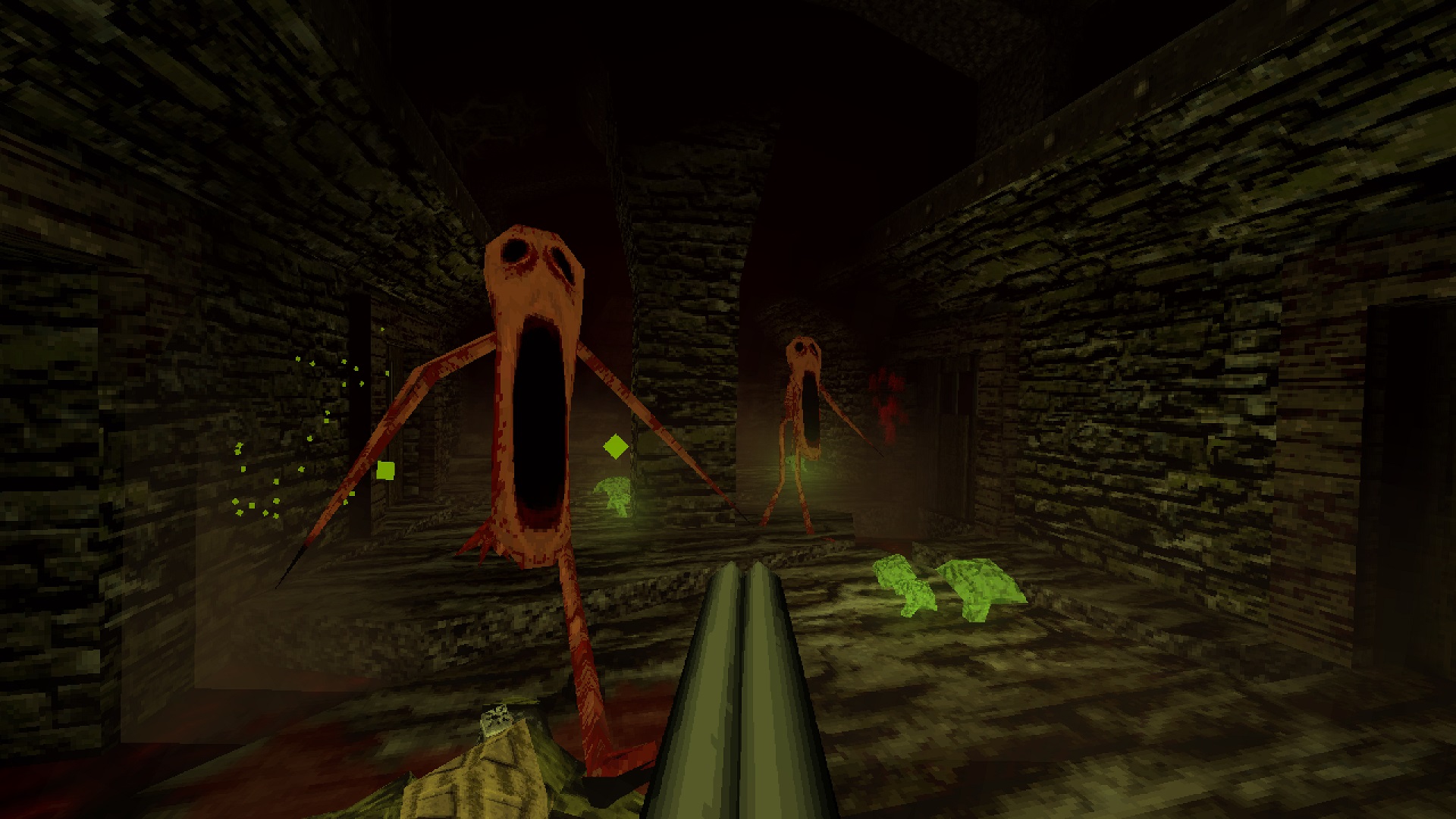
Credit: New Blood Interactive
Ion Fury started as a small spin-off project of 2016’s Bombshell, a top down action shooter developed by Slipgate Ironworks, and development began around a year after its release. Using the classic Build engine was the germ of the idea, but as vice president and executive producer of 3D Realms Frederik Schreiber told EGM, the company wondered if anyone would buy the game due to its outdated look.
“We got in touch with the Duke Nukem 3D modders, the community that has been making maps for this old engine for decades, [and] some folks that worked on a Source port called EDuke 32, and we put together a team to take this idea further,” Schreiber said. Over time, the project grew into something bigger than anyone anticipated.
“We’re no longer limited to trying to make the most-realistic-looking triple-A shooter. The art style actually works, and [we are] building a game around the things that founded the first-person shooters,” he said over Skype. “We asked ourselves what is the core of a first-person shooter, what would happen if we went back to these origins. Turns out, they’re a ton of fun—much more fun, I think, than modern shooters.”
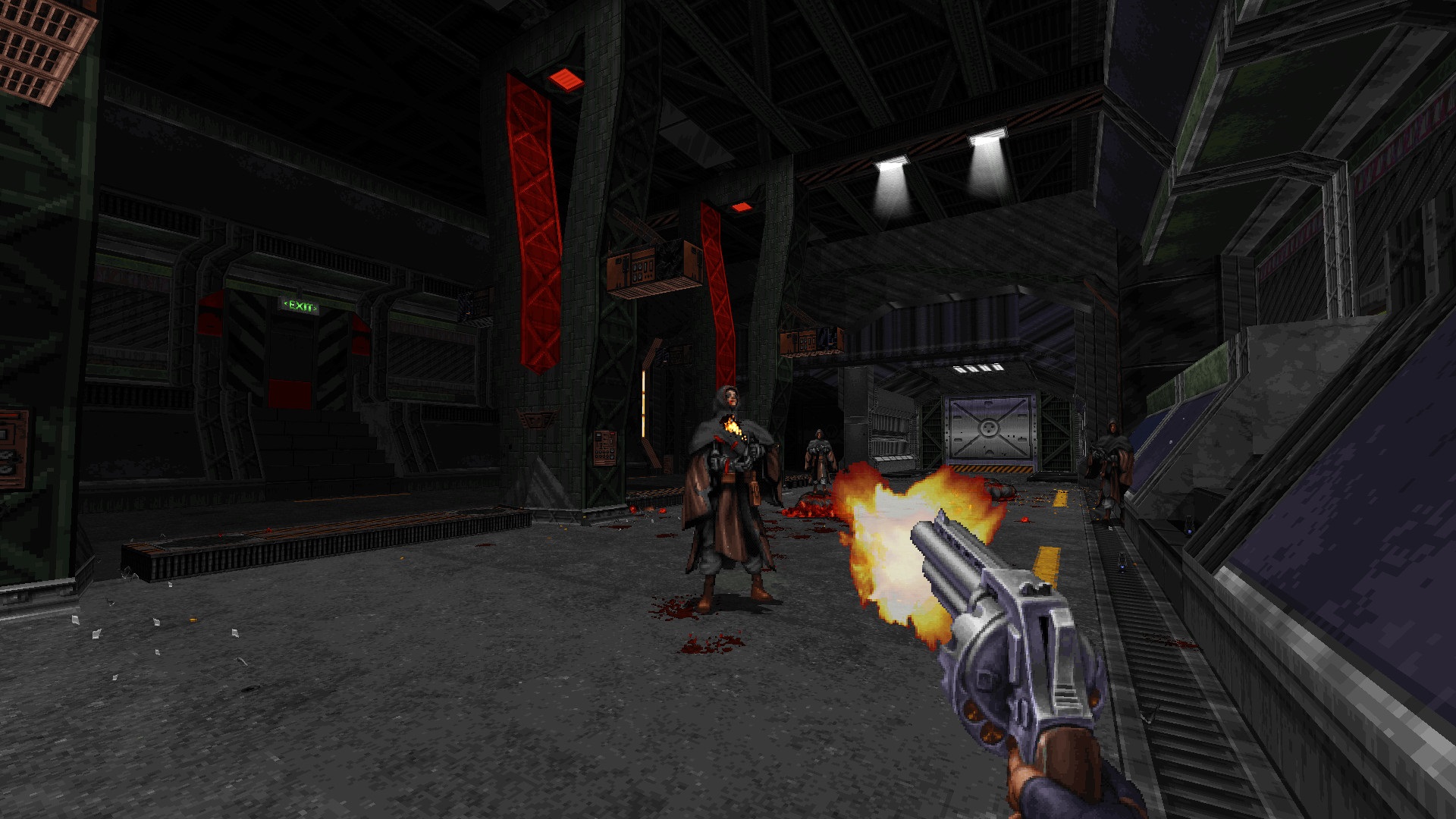
Credit: 3D Realms
Designing gameplay elements that made the games feel like throwbacks was one thing, but making those elements appealing to modern audiences—with modern expectations—and balancing those design decisions presented an entirely different set of challenges. Depending on the game and the vision of each studio, some elements were improved, such as the addition of checkpoints or a focus on creating levels that are easy to navigate, but all remain loyal to their classic influences.
The retro influence is alive and well in Ion Fury, but all of the sprites have been modernized to the height of the Build engine’s capabilities. It’s a fluid and fast shooter that definitely looks like it’s from a different era, and yet the movement is as smooth as ever, supported by native controller support on PC, with console ports planned for the future. Autosaving and checkpoints are in the mix, too. But the overall experience tends to lean into its ’90s roots.
On Project Warlock, Cislo decided to include a basic minimap to to appeal to newcomers of the genre and help less experienced players orient themselves within. He also included difficulty modes so they could tweak how challenging the experience would be.
“Some might not like challenge at all, and a difficulty mode for those players exists in Project Warlock, too. What we left, however, is a very punishing and limited lives system from [these] very old games,” Cislo explained over email. “We felt like it would be interesting to bring it back once again after so many years since the introduction of saving the game at anytime.”
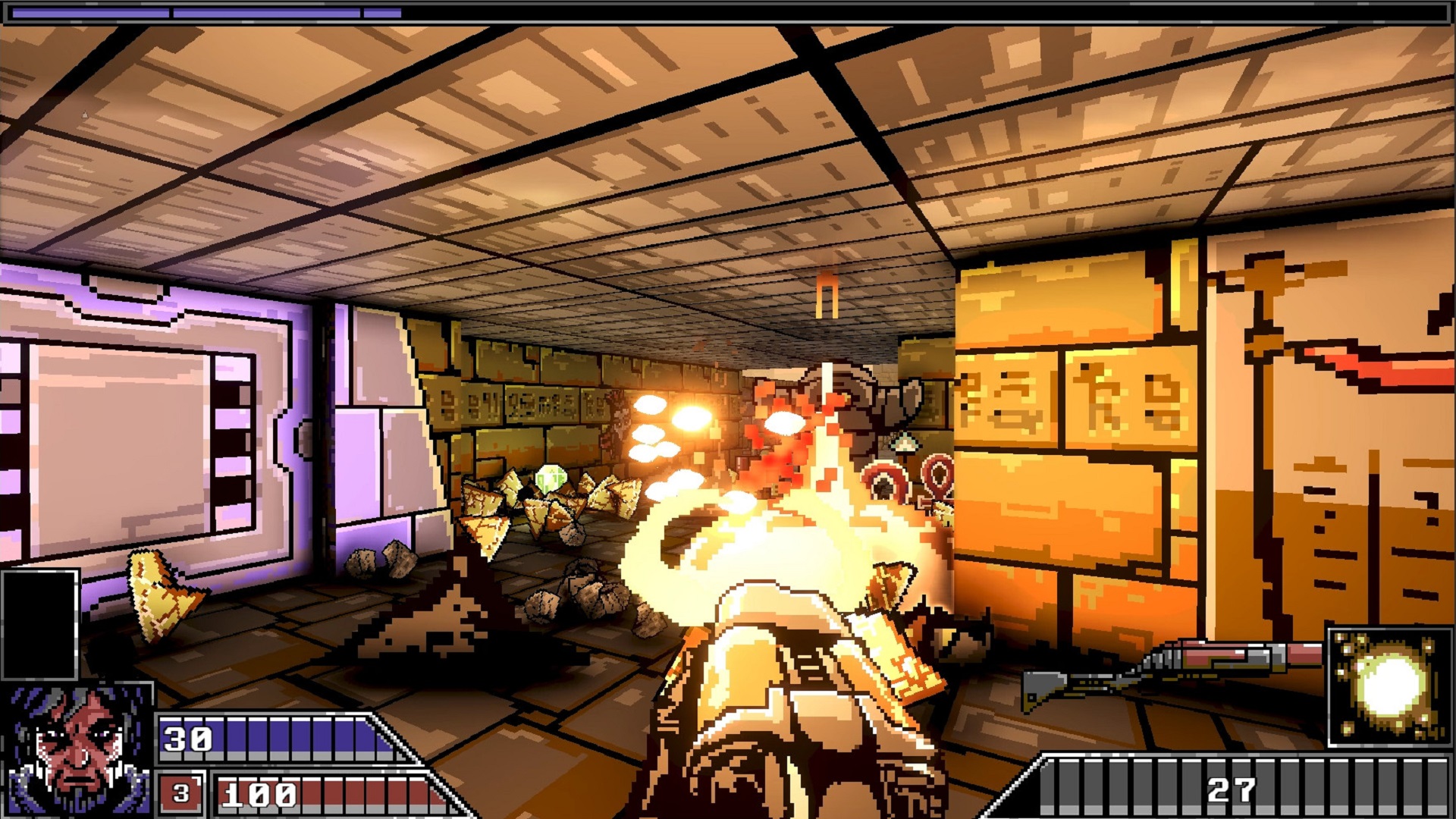
Credit: gaming company
For the developers working on Warlock, carrying all your weapons at once was an element of older shooters they felt they “could not change in order to appeal to newer folks.” While Cislo said that it might be difficult for some to navigate through the weapon list (usually mapped with numbers 1 through 9 on the keyboard), it’s worth it for the convenience of being able to use any gun in your arsenal at a moment’s notice.
Technological limitations are different these days. During the Xbox 360 and PlayStation 3 era, decisions like including loadouts or capping how many weapons the player could simultaneously carry were made for optimization purposes, to allow games to run at a smooth 30 frames per second on consoles.
“The fact you could only carry two guns at a time, generally came from a necessity to stream content due to memory budgets. The same went for AI, which generally capped out at around 8 [enemies] max for higher end games,” Mojica told us, recalling his experiences working in triple-A games in the past.
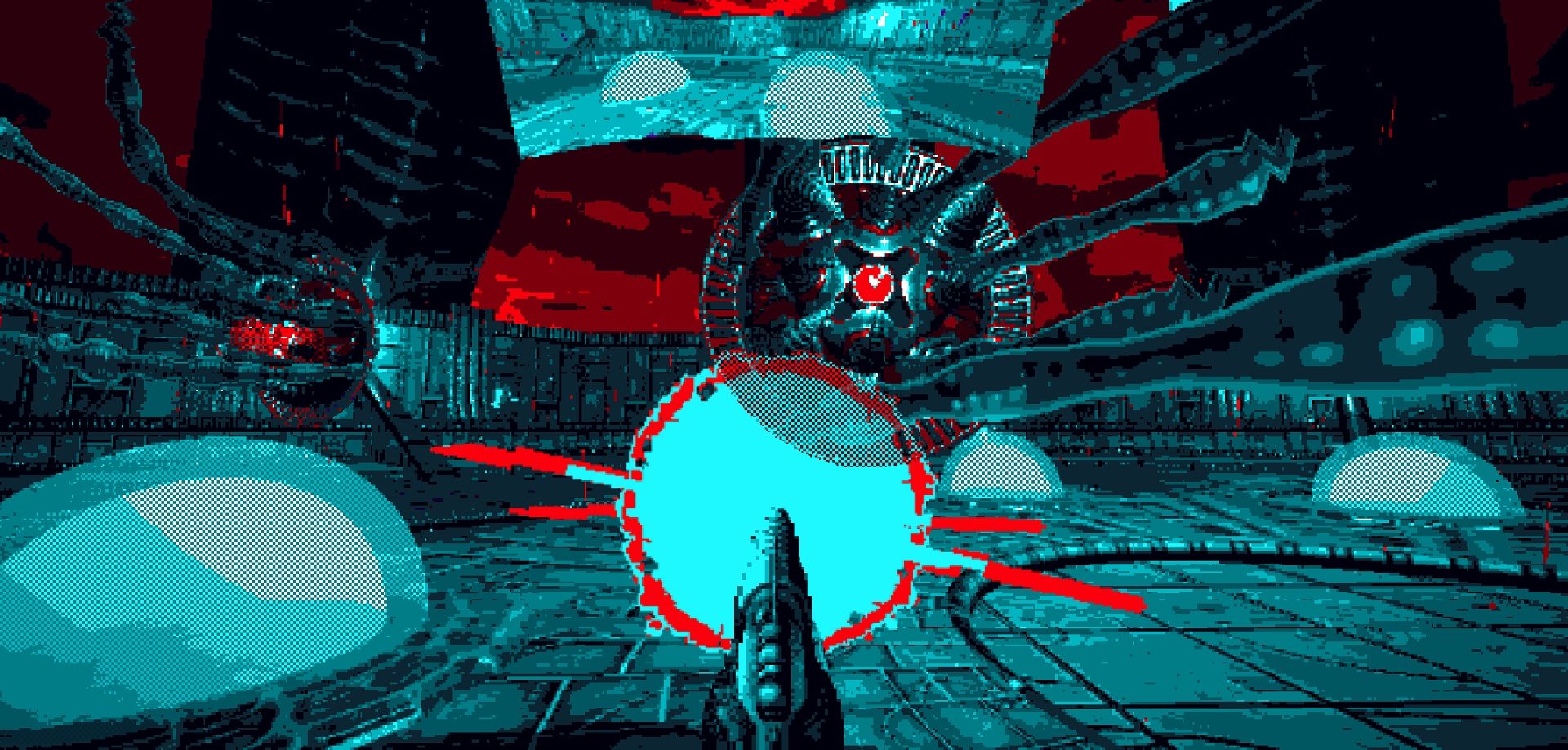
Credit: Jamie Degen
Hellscreen developer Jamie Degen, on the other hand, has been finding inspiration in more modern gameplay mechanics and how they can enhance a throwback experience, especially when it comes to exploration. Influenced by recent Metroidvania titles, Hellscreen will add level-based puzzles, an upgrade system, and fast travel to the retro shooter formula as well.
“It’s got mechanics from other games layered on top, which I think will sort of maintain that old-school first person shooter vibe that I know a lot of people want who are still very fond of, as well as elements from games that are spiritual successors of them,” Degen said.
This revival isn’t without controversy. While the ’90s saw plenty of outrage over the violence in classic shooters, these days it’s the other elements—like slurs, unnecessary nudity, and the objectification of women—that feel the most out of place. With cultural shifts both inside and outside the game industry, we seem to be moving further from, not closer to, the days when throwing money at strippers felt like a worthwhile addition to a shooter. At the same time, the rise of social media platforms like Reddit and Twitter have amplified discussions surrounding these issues.
Duke Nukem: Forever is the clearest example of a modern project that suffered from this tonal disconnect. Though clearly intended to evoke the older games in the series, its raunchy, often sexist gags felt dated in the eyes of many critics and players.
Voidpoint, the developer behind Ion Fury, has found itself at the center of a similar controversy. At the time of publication, the latest tweet from the studio’s official account reads: “One of our previous tweets said ‘fuck censorship’
“We stand by that sentiment.”
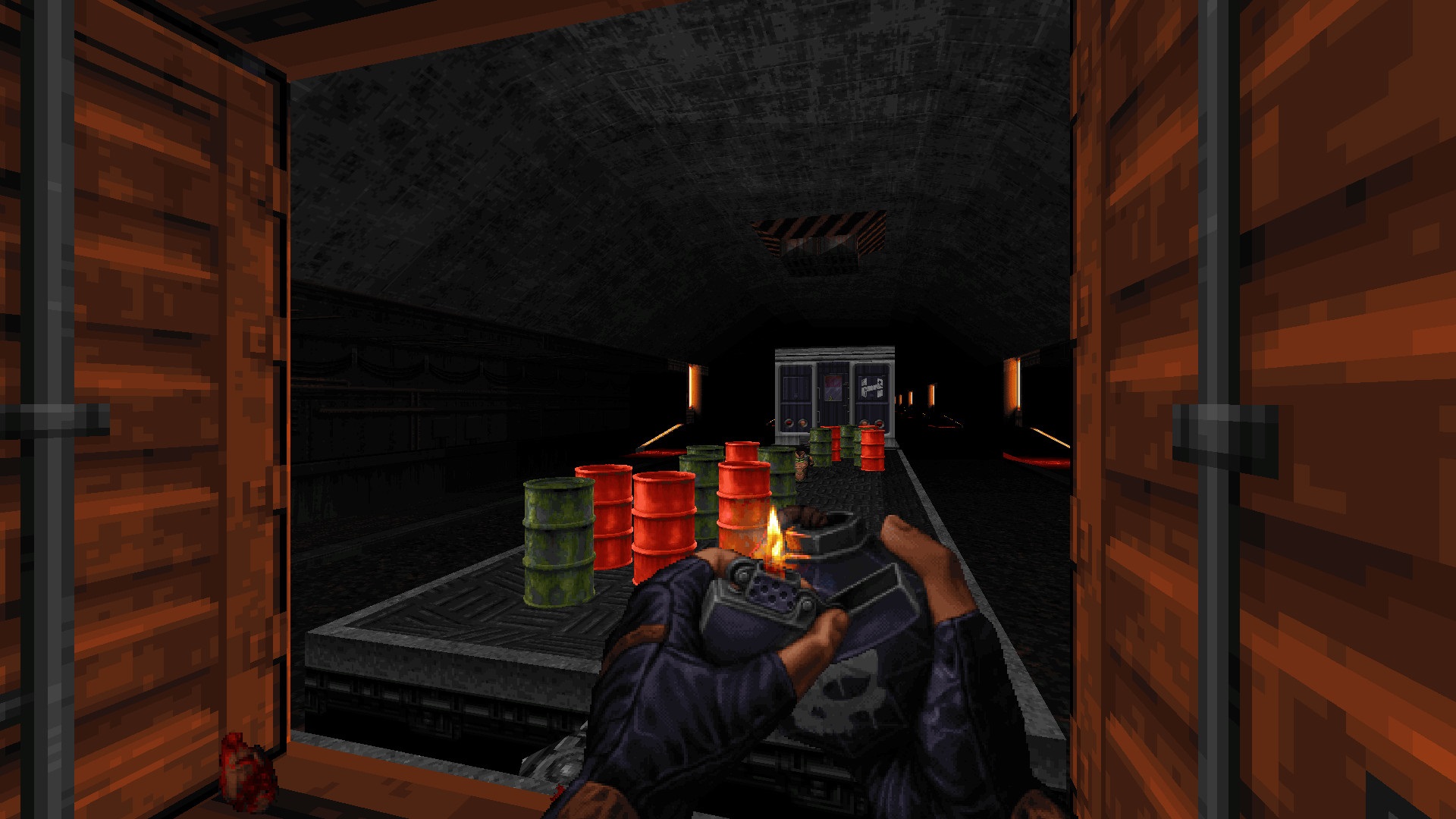
Credit: 3D Realms
The studio sent out the message on August 26th, following days of replies to dozens of users who had shared evidence of homophobic language found in the game, along with messages from developers talking in Ion Fury’s official Discord channel. ResetEra user Twenty5Thousand had raised the public profile of these messages in a thread on the popular gaming forum.
In August 16, @dosnostalgic tweeted that he regretted buying the game during Early Access and promoting it on social media after reading the conversation screenshots from their Discord. Voidpoint responded by saying, “That’s your choice, but you should probably do your own research before coming to that conclusion. The crop tool in Photoshop has always been just as much about what you are removing as what you are keeping.”
This is in reference to a screenshot that shows a Voidpoint developer with the handle terminx saying “some of them are fucking nuts” after a conversation regarding “social justice warriors.” The official account tweeted a second screenshot showcasing further context, which specifically mentioned doxxing. Since then, that first message has been deleted from the Discord, but the rest of the conversation remains.
Inside the game, the word “fagbag” could be seen in a room by using the noclip cheat to get past walls, and soap bottles had “ogay” written on them. (A Eurogamer report includes screenshots of both.)
In an initial statement, Voidpoint and 3D Realms said that they were instituting a “zero-tolerance policy for this type of language,” adding that all employees and contractors would undergo mandatory sensitivity training. In addition, the companies said $10,000 of Ion Fury’s release day proceeds would be donated to The Trevor Project, a non-profit foundation aimed at supporting LGBTQ youth, and that the offensive content would be patched out of the game.
However, a second joint statement released on August 26th complicated the picture. “We’ve caused a recent controversy suggesting Ion Fury game content was to be censored,” the follow-up reads. “We will absolutely NOT be censoring Ion Fury or any of our other games, now or in the future, including but not limited to by removing gags such as gaming’s most controversial facial wash.”
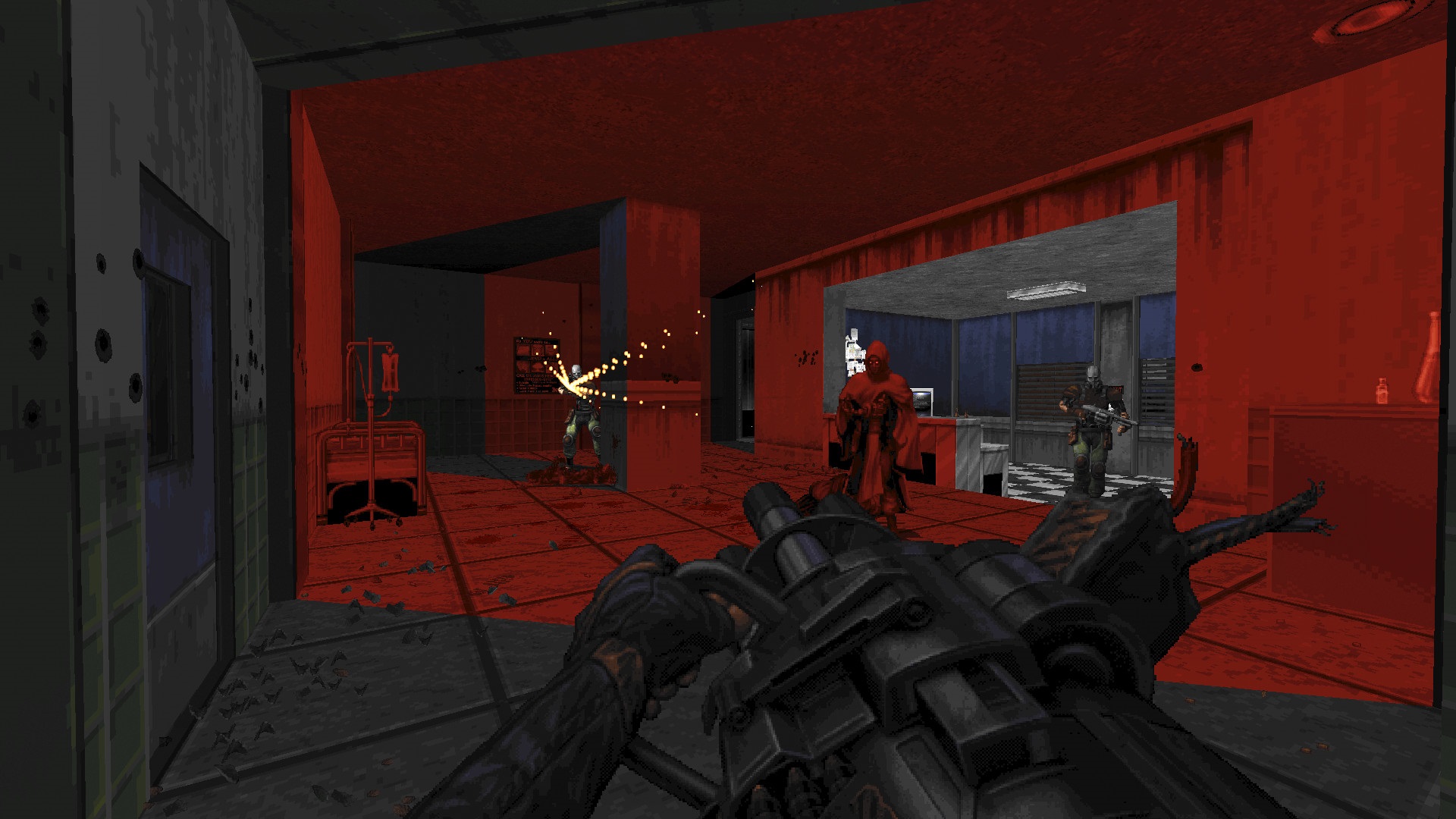
Credit: 3D Realms
The developers ended up patching out “fagbag” from the game, as they considered it a legitimate error. Voidpoint said on Twitter that the developer responsible wasn’t from an English-speaking country. “It wasn’t a joke, political statement, or anything else. I asked him if it would be offensive in his country, he said no, I believe him. He removed it.”
As for the facial wash gag, which remains in Ion Fury, Voidpoint tweeted, “If you think playing off the brand name ‘OLAY’ to write ‘OGAY’ is a homophobic slur, I don’t know what to tell you. If you’re looking to be offended you will often find what you’re looking for.”
When EGM reached out to 3D Realms for further comment, the publisher declined to elaborate on its previous statements. In August, however, the company explained its rationale to GameIndustry.biz: “Jokes at the expense of marginalized communities will not be present in future games published by 3D Realms. However, a portion of our community made it loud and clear they felt removing ‘Ogay’ was censorship and should be protected by free speech. Voidpoint wanted to listen and we respected this decision.”
At the time of publication, messages from the community that read “nobody cares about your whining here” and “we’re just happy we have our dumb soap bottle joke that is so dumb no one could ever be sincerely offended by it” can still be found in 3D Realms’ Discord server, along with dozens of replies in each of Voidpoint’s tweets championing their anti-censorship stance.
All the developers who we’ve reached out to share similar influences, and they all recalled them fondly when talking to us. For some, their interest in the genre’s history springs from the gap left by modern triple-A first-person shooters. Others saw the appeal as stemming from simple demographics—people that grew up in the ’90s alongside early shooters are now in their 30s and 40s and likely feel nostalgia for that kind of action now that they have the free time to play games again.
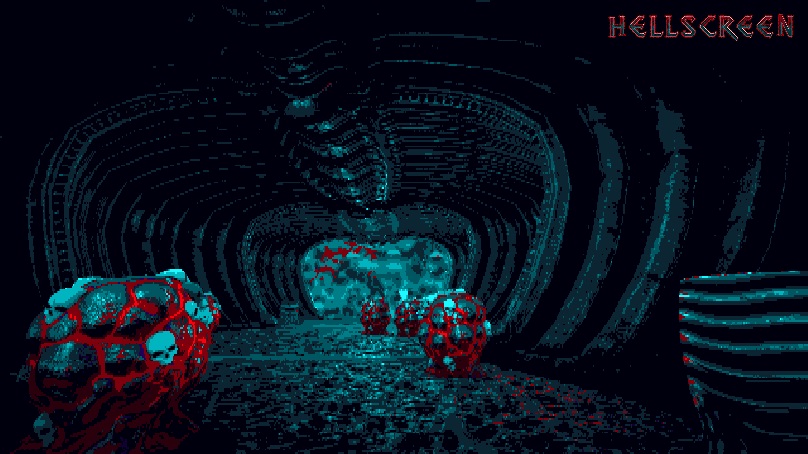
Credit: Jamie Degen
For Schreiber, his love for these first person action shooters mostly came from games developed by 3D Realms, the company that would later become his employer. In his experience, the situation was different back then. “People just thought that video games were mindless fun, so I would just play Duke Nukem, Quake.… I don’t think [parents] ever looked at the age rating or anything like that, which I’m really happy for. I just played all of these classic games as a kid. I know a lot of American kids didn’t have the same loose type of parenting, because they were so careful about buying games that weren’t too violent, so I don’t think matters at all. It’s entertainment.”
Looking back at these shooters also brought the developers we spoke to a new perspective on game design. Some, like Hellscreen’s Degen, are trying to mix up the formula with modern elements, while others want to stick closer to the often dated designs, limiting their updates to accessibility and quality of life changes.
It’s clear that this rising movement is driven by nostalgia. With Doom: Eternal and System Shock 3 on the horizon, we’re seeing big-budget successors to these throwback shooters joining the many independent developers around the world that are now toying with this subgenre.
“It’s resonating for a lot of people because it’s doing it away from the big triple-A cutscenes and stunts,” Degen concludes, arguing that the demand for these throwback shooters come from players wanting something simpler and more straightforward. “Instead, it’s bringing back more of a pure experience. I think that reflects in the way they look, the way they play, the way they feel, and even the way the development teams engage with the people that are playing them.”
Header image credit: New Blood Interactive

Freelance journalist from Argentina. Frustrated bassist. Learned English thanks to video games. He runs Into The Spine, a site that hosts stories around games and what they leave behind, along with supporting both upcoming and established writers. He’s probably listening to music right now, or procrastinating on Twitter.